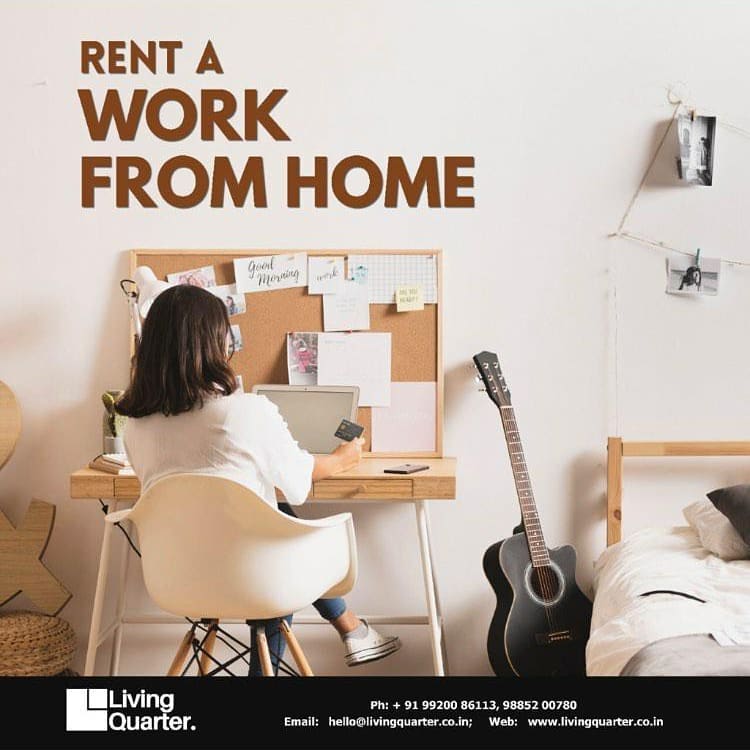The widespread movement of workers and students across the country – from metro to smaller towns – culminated in major organized players like the re-examination of their growth plans by co-living in the pandemic situation like covid-19.
Just in March 2020, when the lockout began, the coexistence field was in a hurdle. The huge migration of workers and students (two large sets of users) from the metro to smaller cities across the country has resulted in big organized players.
Like other services from the common economy, before Co-vid, the Work from the co-living rooms industry was projected to double by 2025 with its market size.
Most businesses had no idea where to go for nearly two-three months after their lockout.” Occupancies fired at 50-70% across the board during that time.
Although the number of occupants is still 15-25%, Co-vid was disguised as a reward for the co-living performers. How would it happen? Accommodation for paying guests (PG) took place for years. The industry is divided into unorganized and organized players with an inventory share of less than 1% of the branded sector. For example, as 15 million people move from one place to another, they need accommodation. This covers approximately 8 million students and 7 million staff. At the moment only about 100,000-120,000 beds are available on the organized market.
But the catch is here! In this period several companies and educational institutions are interested in controlled living spaces to ensure that the right environment exists for their students and staff.
The emphasis of consumers on hygiene, sanitation, protection, quality of life, and procedures is shifted to all managed players. Co-vid’s shift from unbranded to branded consumers is accelerated.
Climatic Work from studio rooms is a service layer above the property, unlike standard PGs and accommodation leased. In a regular apartment, people will communicate with the outside world 15-20 – plumbers, washing, food, home maintenance, protection, etc. In the usual rental accommodation. Via technology investments, players.
For millennia and centennials, Co-living becomes the new home, generations that require more flexibility and accessibility but lower liability and ownership. The versatile housing solution Co-living, all of it in a single bill without permanence, meets these young generations’ rapidly shifting needs and lifestyles.
A detailed concept of Work from serviced rooms may be a living service that provides a curated community with flexible accommodation options that want to enjoy an integrated life experience. It combines usually smaller private areas with a wider range of communal facilities and facilities.
The solutions brought by co-living in a pandemic are:
Flexibility.
Affordable living.
Payment for the use.
Curated community.
Reduction of the economic footprint.
Social and community activation.
Co-living in real-time
Concentration on the environment, health, and sustainability intensified by COVID-19, and the industry was pushed to grow faster mid-term.
Due to delays in the supply of materials or the rapid integration of healthcare protocols and safety rules on the ground, the lockdown has stopped vertical co-living progress. For operators, long-term (6-12+ months) leasing has been much better than those relying on short-term (< three months) leasing. Overall, in comparison with other industries, such as co-working and hotels, the industry performed well in COVID-19.
According to Co-living Insights, certain trends in the current operators are observed due to the continuing pandemic. The most important thing is:
Co-living will shift towards long-term stays
In an age of freedom of movement, Co-living was motivated and this changed drastically because of COVID-19. Co-vid’s travel restrictions greatly impacted many operators who specialize in short-term stays aimed at digital nomads and business travelers. Some were briefly closed and others had to adjust to long-term bids or discuss lease agreements with landlords and tenants.
In addition, some hotels, hostels, apartment hotels, and accommodation for students have made COVID-19 a difficult effort, have changed their approach, and have adapted their business model in a longer-term manner to embrace life. In this unpredictable period, long-term coexistence, therefore, seems safer, and operators need to concentrate on long-term leases to maintain occupancy.
The co-living industry is now focused on local locals, rather than on digital nomads, as before because of travel bans. So at least before free and global movements return, the target demographic will shift.
Will co-living continue growing and how will it evolve?
COVID-19 holds up investment during the pandemic, but the investment industry is searching for a way of turning distressed assets into life. According to CBRE, the prospects for delivery are based on construction. The next generation of buildings will include possible longer-term improvements brought about by COVID-19.
According to Co-living insights, “the emphasis on investment in environmental and social impacts could shift after the pandemic, with investors now recognizing management strategies focusing on the mental and physical health of the tenants being recognized as environmentally friendly investments.
Co-living is more than a housing product, as the model attracts people who want a new way of life. The human behaviours, well-being, sustainability, and experience of the people have been changing in recent years and the pandemic has intensified the change.
New needs of the customer will concentrate on other objectives and create niche models such as family coexistence, elderly people, students, entrepreneurs, and different consumer needs.
The co-living model must adapt to the consumer’s needs and desires, new business models must be developed out of this uncertain global environment, and space adapted to the new layouts and technologies to maintain the physical distance, and health measures. It will take time to adapt the current situation to new trends, but it seems like the industry is changing and growing.
These are conveniently situated near IT parks and business centers in homes. Following the current crisis at COVID-19, many Co-living offers tidy, hygienic, and well-run households, which are handled in full with skilled care, service, and maintenance in the workplace. They take appropriate steps to ensure the safety of their employees and ensure continued service day and night.

